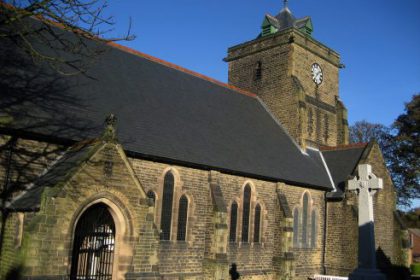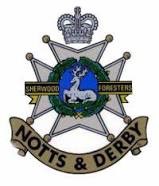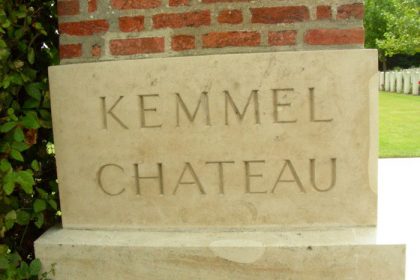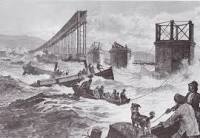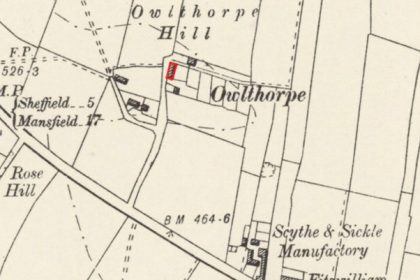Notable amongst Mosborough’s residents in the late eighteenth century was Captain Thomas Hare (c.1743-1796), about whom little is known, but whose legacy lives on in the Mosborough landscape at a place called “Captain’s Croft” and an adjoining footpath, known locally as “Captain”. We have George Foster to thank for the little that we do know about the man, who is described briefly in his book ‘Reminiscences of Mosborough during the present century’, published in 1886[1].
The date and place of birth of Thomas Hare have not been established, but by calculation from marriage records, he was probably born in 1743[2]. He was allocated a place as a Gentleman Cadet at the Royal Military Academy, Woolwich, on 1st January 1759[3], probably at the instigation of his father or another family member. Cadets ranged in age between 10 and 30 and were educated in mathematics, mapping, use of the musket and sword and the scientific principles of gunnery and fortification. Also, senior Cadets were schooled in fencing and dancing. Those performing well in their examinations generally secured officer commissions, without purchase.
Thomas was commissioned as a Lieutenant-fireworker on 4th March 1761[4]. This was a class of officer below the rank of second-lieutenant and lieutenant, but with particular responsibility for formulating and mixing explosive compounds for use in ammunition.
His links to Sheffield and north Derbyshire are unclear, and travel to and from London regularly must have been a challenge, but by 1764 he had met and married Ann (“Nancy”) Elliott (bap. 21st April 1746), only daughter of George Elliott (1720-1788), a merchant of Norfolk Street, Sheffield and his wife Catherine (“Kitty”) (nee Wright, 1720-1805)[5]. The couple were married by licence[6] at the parish church of St. Peter, Sheffield, on 15th August 1764[7], at which time, Thomas was said to be living at Whittington. A licence was required because Ann was said to be 18 at the time of the marriage and the consent of her parents was necessary. A report of the marriage in the Leeds Intelligencer described Ann as “a Lady of great beauty and fortune”[8].
According to his military record, Thomas was commissioned 2nd Lieutenant with the Royal Regiment of Artillery on 29th April 1769[9], and by 1772 he and his wife, Ann, had their first and only child, Catherine (1772-1843), who was baptised at St. Paul’s, Sheffield[10], on 5th November 1772[11]. The following April he was commissioned to the rank of 1st Lieutenant with the Regiment[12][13].
Now at the age of 29, his military career was progressing at a pace. Unlike other branches of the Army, where commissions could be purchased, promotion within the Royal Artillery was based upon merit. Unfortunately, the deployment of ranks below that of Captain is not widely recorded in published sources, so it has not been possible to identify the campaigns and operations in which Thomas was involved. This may be a fruitful area of further specialist research. What his record does reveal, however, is that Thomas was commissioned to the rank of Captain Lieutenant on 7th July 1779, followed by promotion to the rank of Captain on 1 December 1782[14].
At this point he would have been given command of a Company, comprising some 75 or more officers and men. From 1786 to 1790, he is recorded as having command of No. 7 Company of the 4th Battalion of the Royal Artillery[15]. By 21st May 1790, at the age of 47, Thomas was transferred to take command of an Invalid Company of the Royal Artillery. These men were not “invalid” by the current definition, but rather men of over twenty years’ service, who were confined to barrack duties at Woolwich and placed on half-pay. It seems likely that he acquired the property at Mosbrough around this time.
George Foster takes up the story: “The principal houses at that time were …….; the residence of Captain Eyre (sic), at the top of what is now called Captain’s Croft…. Captain Eyre’s residence had a fine view of the valley of the Moss, as well as of miles of country beyond. Near his house were placed two cannon, which were afterwards removed to the house of Mr. Bowden, Southgate, Barlbro’, who was one of the captain’s executors, the other executor being Mr Pedley of Plumbley Hall…… Captain Eyre was a tall, well built man, and a great pedestrian. During his residence in Mosbro’ he was on half pay. The money was paid to him at Manchester, which journey he accomplished on foot in twelve hours each way. He was afterwards sent by government to the Bermudas, in the West Indies, where he and his family died of yellow fever, in a house which he had built of cedar wood. Many years afterwards some maiden ladies came from Ireland to claim his Mosbro’ property, but without success…… The late Captain Eyre’s house has gradually gone to ruin”[16].
At some time before May 1793, Thomas appears to have been living at Dronfield. His daughter, Catherine, was married by licence[17] at the parish church of St. John the Baptist on 7th May 1793 to the Reverend Francis Parker of Sheffield (1762-1840)[18]. He was the son of Kenyon Parker, attorney of Sheffield, and was educated at Sheffield Collegiate School, later becoming a Scholar of Cambridge University[19]. He was to become the Perpetual Curate of Dore for more than thirty years.
The outbreak of war with France followed more than ten years of relative peace after the end of the American War of Independence in 1783. With a peacetime army of under 14,000 men, Britain was hardly in a position to respond decisively to the French declaration of war in February 1793. It was concluded that Britain’s forces would best be deployed in occupying enemy colonies to make secure her own, to weaken France and to enlarge the British Empire[20]. Thomas, meanwhile, had been commissioned to the rank of brevet Major in America, in June 1793, perhaps in anticipation of his future deployment[21] [22] [23].
By November, Thomas was clearly expecting to be involved in military action for some time. His Mosborough property was advertised to let in the Derby Mercury[24], comprising a dwelling house “with a good garden, chaise house, stables and other suitable out-buildings”, together with a parcel of land of about four acres divided into two closes. There was also another close of just over two acres by the River Rother in the occupation of Thomas Lomas[25].
Thomas Hare was not assigned immediately into the West Indies Campaign, perhaps suggesting that his invalid battalion was being held in reserve. His name does not appear among the officers accompanying Sir Charles Gray in his expeditionary force’s successful invasion of Martinique, St Lucia and Guadeloupe in 1794[26]. He was, however, despatched to Bermuda and arrived there on 7th June 1794 aboard the warship HMS Scorpion along with his company of Royal Invalid Artillery, their weapons and stores. He and his men arrived “all in perfect health” after an eleven-week passage from Portsmouth and Cork[27].
He was sent to reinforce the island’s garrison of a detachment of the 47th (The Lancashire) Regiment of Foot and as the senior officer on the Island, he assumed command of the 47th Regiment[28]. Sadly, he died there on 6th October 1796[29]. George Foster[30] was probably correct in his assertion that Thomas died of yellow fever; almost 44,000 soldiers and NCOs died of that and other tropical diseases in the West Indies campaign between 1793 and 1798[31]. However, he was wrong to suggest that his wife and family died with him. Ann remained in England and died in Dronfield in 1812 and was interred in the chancel of St. Paul’s, Sheffield on 7th March 1812[32], probably in a family vault alongside her father. Their only child Catherine also remained in England.
The death of Major Hare was confirmed by an advertisement that appeared in the Derby Mercury in 1797 offering the Mosborough property for let once more and described as “late in the possession of Major Thomas Hare, deceased”. Further particulars were to be obtained from Henry Boden, Esq., of Southgate House, Barlborough, and Mr. Pedley of Plumley[33], executors of the deceased.
[1] Also referenced in English, D., “A History of Mosborough” (1999). Both writers erroneously naming the Captain as “Eyre”.
[2] Although Hare was a common enough surname around Sheffield and North Derbyshire in the seventeenth and eighteenth centuries. Date calculated from his age at marriage.
[3] Great Britain. Adjutant-General’s Office. (1815). List of officers of the Royal Regiment of Artillery: as they stood in the year 1763, with a continuation to the present time … with a list of the officers of the corps of Royal Artillery Drivers … and of the officers of the Military Medical Department of the Ordnance, since 1763; with a list of the chief commissaries … Greenwich: printed by Elizabeth Delahoy, Albion Printing Office.
[4] Ibid.
[5] Ann’s grandfather and Catherine Wright’s father, Thomas Wright (1696-1781) of Nunnery Farm, Sheffield Park, was the first stage carrier from Sheffield to London, and might well have been the means by which Thomas travelled to and from London. He could also have been involved in the introduction of Thomas Hare to his grand-daughter. Inevitably, the journey between the two cities would have included passage through Mosborough.
[6] Yorkshire, Archbishop of York, Marriage Licences, 1613-1839 – Hare & Elliott 5 August 1746.
[7] General Evening Post, 23rd August 1764. Information from the Parish Register: By licence with the consent of the parents. Groom – Thomas Hare, of the Parish of Whittenton Co Derby, Lieutenant in the Royal Regiment of Artillery. Bride – Ann Elliot, of this Parish. Witnesses: – John Wright, Dorothy Wright, Mary Hennell, Margaret Wright.
[8] Leeds Intelligencer, 28th August 1764.
[9] List of officers of the Royal Regiment of Artillery, etc. Ibid.
[10] The population of Sheffield was growing rapidly at this time and the church of St. Paul’s had been built on Pinstone Street in 1720 (and opened in 1740) as a chapel of ease for the parish church. The church closed in 1937 and was demolished the following year, occupying the site of what is now the Peace Gardens.
[11] St Paul’s Parish Register.
[12] 28th April 1773. List of officers of the Royal Regiment of Artillery, etc. Ibid. There is an entry in the Probate Register dated 2nd May 1773, for a Thomas Hare of Sheffield. This could be Thomas’ father, but without further evidence it remains supposition (Prerogative & Exchequer Courts Of York Probate Index, 1688-1858).
[13] Caledonian Mercury, 5th May 1773.
[14] List of officers of the Royal Regiment of Artillery, etc. Ibid.
[15] Duncan, Captain F., History of the Royal Regiment of Artillery, Vol. I, 3rd Edition, 1879.
[16] Foster, G., Reminiscences of Mosborough in the present century, 1886.
[17] The licence describes Thomas as “Thos Hare Gent. of the parish of Dronfield in the County of Derby”, and states that “Thomas Hare Gent the Father of the above mentioned Catherine Hare gave his consent in Writing under his own hand & in the presence of W. Best Gentleman. This Consent is dated from Sheffield February 1st 1793” (the day that Republican France had declared war on Britain and Holland), suggesting that Thomas was on military service at the time of the wedding. Catherine was under the age of 21 at the time, hence the requirement for a licence. Staffordshire, Dioceses of Lichfield & Coventry marriage allegations & bonds, 1636-1893 – Parker & Hare – 1793.
[18] Dronfield Parish Register.
[19] Cambridge University Alumni, 1261-1900 – PARKER – Francis Parker – entered 1781.
[20] Geggus, D., “The British Government and the Saint Domingue Slave Revolt, 1791-1793”, The English Historical Review, April 1891.
[21] List of officers of the Royal Regiment of Artillery, etc. Ibid. A brevet rank title was often awarded for gallantry or meritorious conduct.
[22] Kentish Gazette, 20th September 1793, possibly confusing him with Captain Thomas Hare of the Norfolk Yeomanry Cavalry.
[23] The Scots Magazine, 1st October 1793.
[24] Derby Mercury, 21st November 1793.
[25] Thomas Lomas of Mosborough (1727-1811), m. Mary Bullock (1730-1813) at St. Peter and St. Paul, Eckington on 24th December 1759, bur. Eckington, 30th October 1811.
[26] Brown, S., By Fire and Bayonet, Gray’s West Indies Campaign of 1794 (From Reason to Revolution), 2017.
[27] Bermuda Gazette and Weekly Advertiser, 7th June 1794.
[28] Bermuda Historical Quarterly, 1968, Vol. 25(4), p. 122.
[29] List of officers of the Royal Regiment of Artillery, etc. Ibid.
[30] Foster, G., Reminiscences of Mosborough in the present century, 1886.
[31] Knight, Roger (2014), Britain against Napoleon: The Organization of Victory 1793 – 1815, Penguin, p. 102
[32] St. Paul’s Parish Register.
[33] Derby Mercury, 8th June 1797.


